No 16 Elementary Flying Training School at RAF Burnaston, near Derby, was used to train glider pilot students to fly light aircraft from January 1942. Several glider pilot students died in accidents while undergoing training at Burnaston and four are buried nearby in St. Wystan’s Churchyard, Repton.
Shortly before the war an RAFVR Flying School had been established alongside Derby Aero Club at the newly built Burnaston airport. The Reserve Flying School (RFS) and airport was run by Air Schools Limited, a civilian company, and several of the civilian ground crew also served in the RAFVR. With the outbreak of war the RFS became No 16 Elementary Flying Training School (EFTS) and the head of Air Schools was re-commissioned as an RAF Officer. The civilian company remained responsible for the operation and maintenance of the aircraft, primarily Tiger Moths and Miles Magisters. In spite of intense training activity, and over 100 aircraft on strength, it achieved the best maintenance record and lowest accident rate of any EFTS.
Gliders were used to deliver British Airborne Forces into combat in the second half of World War II. The development of a glider capability started in parallel to the formation of a paratroop unit in 1940 however it was not until early 1942 that The Glider Pilot Regiment was formed.
Prior to the Regiment’s formation the Air Ministry and War Office had agreed the selection and training standards for glider pilots. Prospective glider pilots were expected to undergo a basic course at the Regiment’s Training Depot at Tilshead. If they were considered suitable they were posted to begin their training at an RAF Elementary Flying Training School to fly light aircraft. By the end of this course each glider pilot student was expected to have accumulated an average of 130 hours flying time. After EFTS the students proceeded to a further course to learn to fly Hotspur Gliders, at a Glider Training School, and then to a course at a Glider Operational Training Unit (later replaced by the Heavy Glider Conversion Unit) to be trained on the Horsa glider. Once qualified as glider pilots they were posted to Battle School to develop their infantry skills. (During the course of World War II there were adjustments to this training programme and in 1944 a shortened course was introduced for second pilots.)
The EFTS at Burnaston began training glider pilot students on 1 January 1942 and not long after all of its flights were turned over for this purpose. However, to meet the need for large numbers of fully trained glider pilots three other schools were also designated for glider pilot students in the Spring and Summer of 1942 to increase training capacity:
No 21 EFTS RAF Booker No 29 EFTS RAF Clyffe Pypard No. 3 EFTS RAF Shellingford
Eight officers, including Lt Col John Rock as commanding officer, had been personally selected by General ‘Boy’ Browning to form the command structure of the newly created 1st Battalion, The Glider Pilot Regiment. John Rock was a key figure in the initial development of British military parachuting and glider operations (see separate roll call profile.) The 8 officers attended Burnaston to commence their flying training on New Year’s Day 1942 and passed onto Glider Training School in April. They were shortly followed to Burnaston by the first cadre from the Regiment’s Training Depot at Tilshead.
Corporal Trevor Francis was one of the first glider pilot students to train at Burnaston. The book ‘Glider Pilots at Arnhem’ records the contrasts between Tilshead and Burnaston along with some of Trevor Francis’ experiences at the flying school:
“The contrast between Tilshead and Burnaston could not be starker. Having endured the Spartan intensity of the training on Salisbury plain, life in elementary flying school was almost luxurious. The class room syllabus included all of the staples required to form the foundations of flying training. Students were introduced to the complexities of the theory of flight, meteorology, map reading, Morse code and the slightly ‘dicey’ art of manually starting an aircraft engine by swinging the propeller. The weeks of effort at Tilshead were all justified at Burnaston when the course was finally introduced to their first aircraft, the monoplane Miles Magister. Trevor Francis described this initial flying phase of his training as ‘heaven.’ He was paired up with his flying instructor, Pilot Officer ‘Slow Roll’ Booth. The nickname was apt as it was rare to fly with him without executing that particular aerobatic manoeuvre. Trevor learnt quickly to tighten his straps in the cockpit whenever he heard the phrase ‘I want to wave goodbye to my girlfriend’. The phrase was normally followed by the aircraft flying inverted alongside a train at about one hundred feet. With the Pilot Officer’s girlfriend waving from her carriage window, the Magister would fly along on a parallel track upside down!”
Although Burnaston had the lowest accident rate of any EFTS, accidents did occur from time to time:
“The greatest psychological hurdle for most student pilots is successfully flying solo for the first time. For Trevor this happened very suddenly as he accumulated the grand total of seven and a half hours of dual flying in the Magister. Having successfully flown solo all appeared to be going well for him until the next day. While flying ‘circuits and bumps’ around the Burnaston circuit he ran into problems:
‘I suddenly found that I could not touch down without bouncing about fifty feet in the air. Finally, after trying for an hour, covered in sweat, my approach was too far up the field. I tried again, but with the flaps down and full throttle I skimmed the hedge heading for the trees, which this time I could not fly over, so tried banking between two of them. The right wing hit a tree at about a height of seventy feet and snapped off whilst the plane spun round like a boomerang, I vaguely remembered spinning around the house then seeing circular pans (roof tiles) and brick towers, one of which took the left wing off at a height of about ten feet, immediately the fuselage spun in a circle, one of the towers taking it off just behind me. What was left dived into the ground with the engine still at full throttle and being forced into the front pilot’s seat.’
A shaken but uninjured Trevor climbed out of the wreckage to the sound of approaching ambulance sirens. There was a downside to his good fortune- the crash site was in the middle of the station sewerage farm! After twenty four hours in the medical centre the unfortunate Trevor emerged expecting to find himself returned to the relative monotony of life in a gun battery, but was to be pleasantly surprised:
‘I walked to the crew room only to find Pilot Officer Booth waiting on the door step. His only comment was ‘Well you might have phoned me and told me you were in the shit!’ Pointing to a plane he said ‘Get in’ and off I went with Pilot Officer Booth, giving a flying display of just about everything that can be done with an aircraft. He landed and got out, and said ‘Off you go, circuits and bumps’, which went like a dream, leaving me uncertain about what had caused my accident in the first place.’ ”
Others were not so fortunate, several men from The Glider Pilot Regiment died while training at No 16 EFTS RAF Burnaston, and four are now buried nearby at St. Wystan’s Churchyard, Repton:
Corporal William John Scudamore, died 8 May 1942 Corporal Sydney John Graham, died 5 June 1942 Corporal Robert Edwin Hall, died 1 September 1942 Sergeant Cecil William Kelsey-Wilkinson, died 2 April 1943
After the war the airfield reverted to a Reserve Flying School for the RAFVR but this closed in the early 1950s. Derby Airways began scheduled flights from the airfield around this time using an ex-military C-47 converted for civilian use, and which had been previously used as a glider tug. The airline’s second acquisition was another ex military C-47 (KN628) which had been the personal transport of Field Marshal Montgomery. However Burnaston was too small for the growing size of commercial airliners and Derby Airways (later to become British Midlands/BMI) transferred to Donnington in the 1960s. In later years Derby Aero Club continued to use Burnaston but the site was eventually sold and is now the location of Toyota’s vehicle manufacturing plant.
Quotations reproduced with kind permission of Pen and Sword Books from Mike Peter & Luuk Buist, Glider Pilots at Arnhem (2009) Pen and Sword, ISBN 184415763-6.
Burnaston Airfield Photo reproduced by kind permission of BMI.
Source: Quotations reproduced with kind permission of Pen and Sword Books from Glider Pilots at Arnhem by Mike Peters and Luuk Buist. Published by Pen and Sword 2009. ISBN 184415763-6. Burnaston Airfield Photo reproduced by kind permission of BMI.
Read More
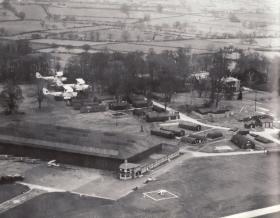
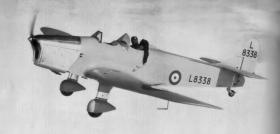
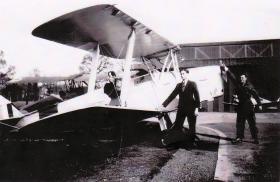
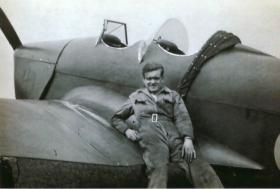
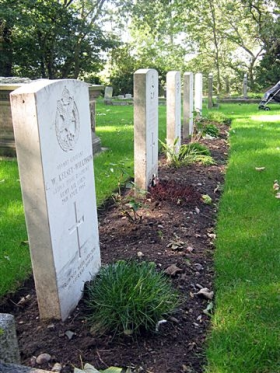
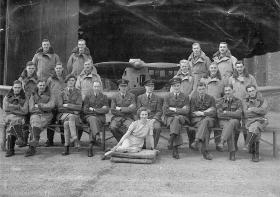


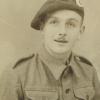

Latest Comments
There are currently no comments for this content.
Add Comment
In order to add comments you must be registered with ParaData.
If you are currently a ParaData member please login.
If you are not currently a ParaData member but wish to get involved please register.